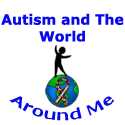Asthma And The Feingold Program
>> Sunday, January 18, 2009
Asthma is a very common condition among Americans as well as many other countries around our beautiful world. There is information leading to the use of food additives as well as food colorings that can trigger asthma attacks. I am still looking over a book called, "Why Can't My Child Behave?" by Jane Hersey; Pear Tree Press Inc. Williamsburg, VA. Inside the book is a section on Asthma, and I thought that I would share the information to you.
Among the potential triggers for asthmatic attacks the American Lung Association lists: food additives, azo dyes [eliminated on the Feingold diet], and benzoate preservatives [i.e. sodium benzoate]. Other benzoate preservatives are listed in other posts that are on my blog.
The Food and Drug Administration has long required that Yellow No. 5 be listed by name on ingredient labels. This is due, in part to their recognition of the danger the dye can pose for asthmatics.
"Asthma disables children more frequently than any other condition", according to Miles Weenberger, professor of pediatrics at the University of Iowa College of Medicine. He notes that more than 10 percent of all children now have or, have had, asthma and the greatest increase in hospital addmissions for asthma is among 1-5 year olds.
Canada's Centre for Disease Control reports that among people between ages 15-24, there has been an increase of 163 percent in asthma-related deaths. They also noted the greatest increase has been in deaths among asthmatic women. Canadian epidemiologist, Dr. Donald Wigle, suggested that "environmental factors such as food additives or air-tight office buildings containing irritating pollutants may be increasing the rate of fatal asthma attacks." An epidemiologist is a scientist who uses statistics to identify potential causes for health problems.
Between the 1940's and 1980's, the British medical journal, Lancet, reported: " Environmental agents--including traffic jams, industrial and domestic pollutants, ventilation plants, tobacco smoke, natural allergens and food additives--can help to provoke bronchial hyper-reactivity and so provide the background conditions for the development of asthma.
An often-mentioned trigger for asthmatic attacks is sulfur dioxide (Journal of Allergy and Clinical Immunology 1985;76;40-45) and the various sulfur-based preservatives. Sulfites have been used not only in salad bars, wines, and some convenience foods, but have been added to medicines for asthmatics.
Research at the Royal North Shore hospital in Sydney, Australia points to MSG (monosodium glutamate) as a potential trigger. Dust mites, animal dander, and cigarette smoke can be even more potent irritants if they are found in air tight homes, schools, or offices.
The New England Journal of Medicine described artificial flavoring in toothpaste as a potential cause of bronchospasms in some asthmatics. [In addition to artificial flavoring, toothpaste typically contains dye and saccharine, both petroleum derivatives which Feingold members report as triggers for asthmatic attacks].
Asprin and other anti-inflammatory drugs such as ibuprofen and indomethacin (Indocin), and the food coloring tartrazine; Yellow No. 5. The FDA requires that this dye be listed on the ingredient labeling of all foods and those drugs taken internally in which it is used, to to alert the 47,000 to 94,000 asthmatics the agency estimates may be sensitive to it. Dyes used in medicines were noted by the American Academy of Pediatrics Commitee on Drugs as being bronchoconstrictors are as follows. Red No.2, Red No. 3, Red No. 4, Yellow 6, Blue No. 1, Blue No. 2. Jane Hersey added that, "When a dye, such as Red No. 2 or Red No. 4, is banned from use in foods, that does not necessarily restrict its use in medication."
In additon, fish oil's anti-inflammatory properties appear to be responsible for helping address the symptoms of excercise-induced bronchoconstriction in athletes. Most modern diets are sorely deficient in the essential fatty acids found in fish oil and cod liver oil. So happy eating just don't eat to much due to mercury deposits in some types of fish.
I want to thank Mrs. Jane Hersey for such a great book with so much information that the whole world could use. Thank you for allowing me to use your book and my voice to teach the world of the wonders that the Feingold Program can have on the world once followed. You are amazing and as always thank you.




0 special comments:
Post a Comment